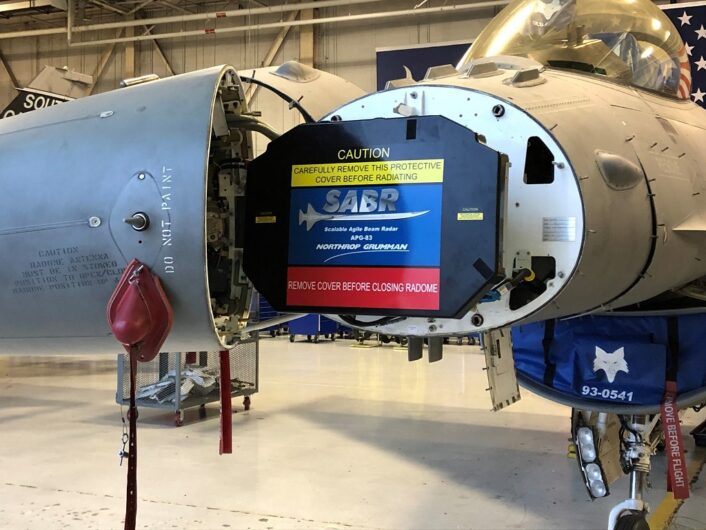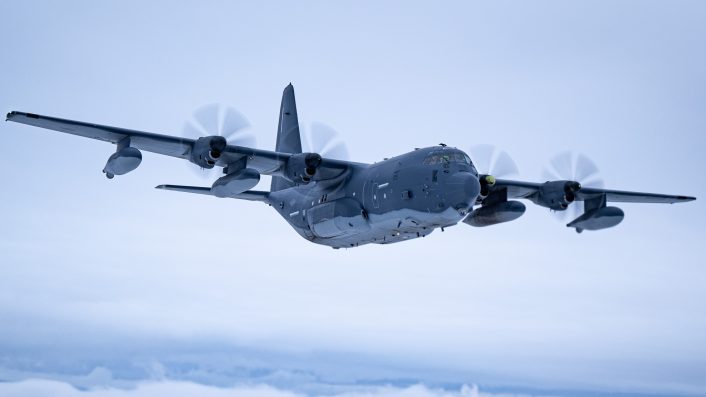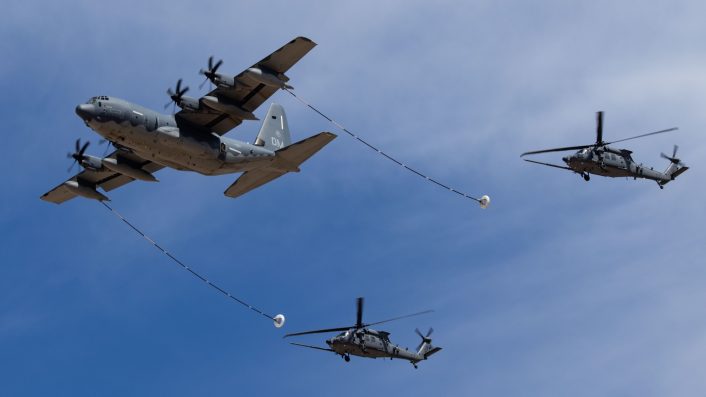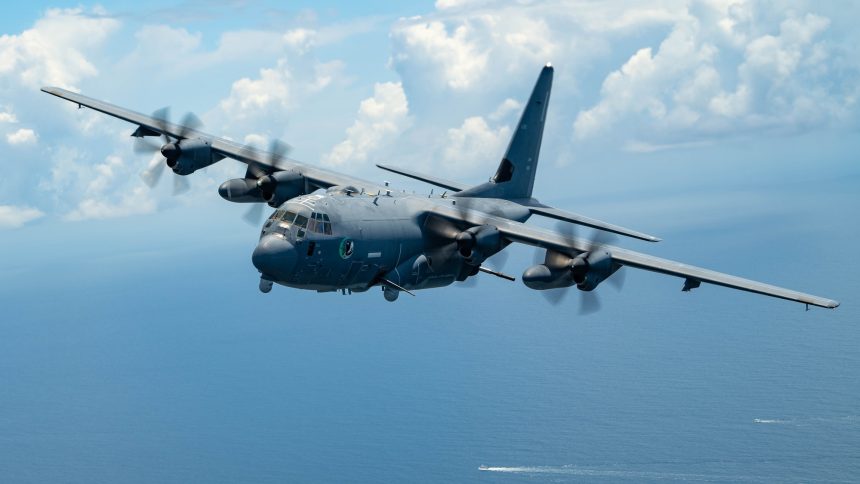Special Operations Command selected Northrop Grumman’s APG-83 SABR to replace legacy radars on AC-130J, MC-130J, and HC-130J aircraft.
The U.S. Air Force has announced that Special Operations Command (SOCOM) will equip its fleet of C-130 variants with the Northrop Grumman AN/APG-83 Scalable Agile Beam Radar (SABR), marking a significant leap forward in the aircraft’s mission capabilities. The plan, detailed in a special notice by the Air Force Life Cycle Management Center (AFLCMC) on Aug. 27, 2025, covers the acquisition of 147 radars and associated components for 64 MC-130Js, 39 HC-130Js, 30 AC-130Js, plus spares.
The decision, first reported by Aviation Week, comes after more than a decade of discussions about enhancing SOCOM’s C-130 fleet with active electronically scanned array (AESA) radar technology. Previous attempts, such as testing the AN/ASQ-236 Dragon’s Eye pod on gunships, ultimately failed to meet operational needs.
The APG-83, already in service aboard F-16s, is now positioned as the radar of choice for some of the Air Force’s most versatile special operations aircraft. These platforms are currently involved in multiple upgrade programs, meant to make them more relevant in current and future scenarios.
From Legacy Systems To AESA Capability
Currently, the SOCOM C-130 fleet relies on the Northrop Grumman AN/APN-241 mechanically scanned radar, primarily a weather and navigation sensor. While reliable, this legacy system lacks the multifunction capabilities and resilience needed in modern contested environments.

According to the AFLCMC’s notice, the APG-83 installation will require the procurement of antenna assemblies, receiver exciter processors, and interior cabin equipment kits. Contractors will be responsible for providing materials, sustainment, and support infrastructure at either their facilities or through subcontractors.
The APG-83 itself has never before been integrated into a C-130, but the system is widely deployed on Lockheed Martin’s F-16 Fighting Falcon and represents a proven, production-ready solution for AESA capability. With the C-130 being another Lockheed Marting product, the company would already have all the information needed to prepare the integration of the radar aboard the new platform.
Why The Upgrade Matters
As reported by The War Zone in January 2024, adding AESA radars to AC-130J Ghostriders and MC-130J Commando IIs has long been seen as a way to dramatically expand their roles beyond counter-insurgency operations.
Unlike mechanically scanned radars, AESA systems can provide near-instant scanning speeds and multitasking capability, high-resolution synthetic aperture radar (SAR) imagery – enabling target engagement in all weather conditions, Ground Moving Target Indicator (GMTI) tracking – critical for monitoring vehicles and other mobile threats, enhanced resistance to jamming and increased reliability due to fewer moving parts.

For the AC-130J gunship in particular, the AESA would enable operators to detect and track targets across greater ranges, potentially identifying fixed targets for engagement even in degraded weather conditions. In those conditions, the AC-130 would not be able to employ its multiple electro-optical (EO) sensors.
Although limitations exist – for instance, the radar cannot directly cue the gunship’s left-mounted weapons without additional side arrays- the capability represents a major advance. In fact, the radar might still be used to survey an area even before it is in range of the EO sensors.
The MC-130J, meanwhile, stands to benefit from improved navigation, surveillance, and the ability to act as a communications and electronic warfare platform. AESA radars can be leveraged as electronic attack systems, capable of disrupting enemy electronics, or as long-range, high-bandwidth communications relays for forces in denied environments.
These capabilities would be critical in the platform’s mission to support Special Operations Forces. In fact, in today’s ever-changing operational scenarios, this could increase the roles of the MC-130 behind enemy lines, which would not be limited to the insertion and extraction of SOF teams.

A Longstanding Requirement
The push for AESA technology on SOCOM C-130s dates back at least to 2015, when initial evaluations of radar pods hinted at the potential for improved situational awareness and targeting. Former Air Force Special Operations Command (AFSOC) commander Gen. James Slife highlighted the concept again in 2022, emphasizing the transformative possibilities of an AESA-equipped Hercules.
Slife described such radars as a pathway to “a whole host of capabilities that we haven’t seen up to this point,” including airborne electronic attack and cyber effects. The new selection of the APG-83 aligns with those ambitions, providing a more concrete roadmap to fielding the technology across SOCOM’s fixed-wing fleet.
However, the road is still long, and a timeline for the fielding of the new capability is not yet publicly available. Furthermore, the new AESA installations will have to exist alongside other upgrades, and it is unclear if these could affect the timeline.
Among these is the ongoing rollout of the AN/APQ-187 Silent Knight terrain-following radar, which is being added to MC-130Js and other special operations aircraft. The combined effect of these parallel radar programs could transform the way SOCOM employs its Hercules fleet, giving pilots both low-level ingress capability and high-resolution all-weather surveillance from a single platform family.









